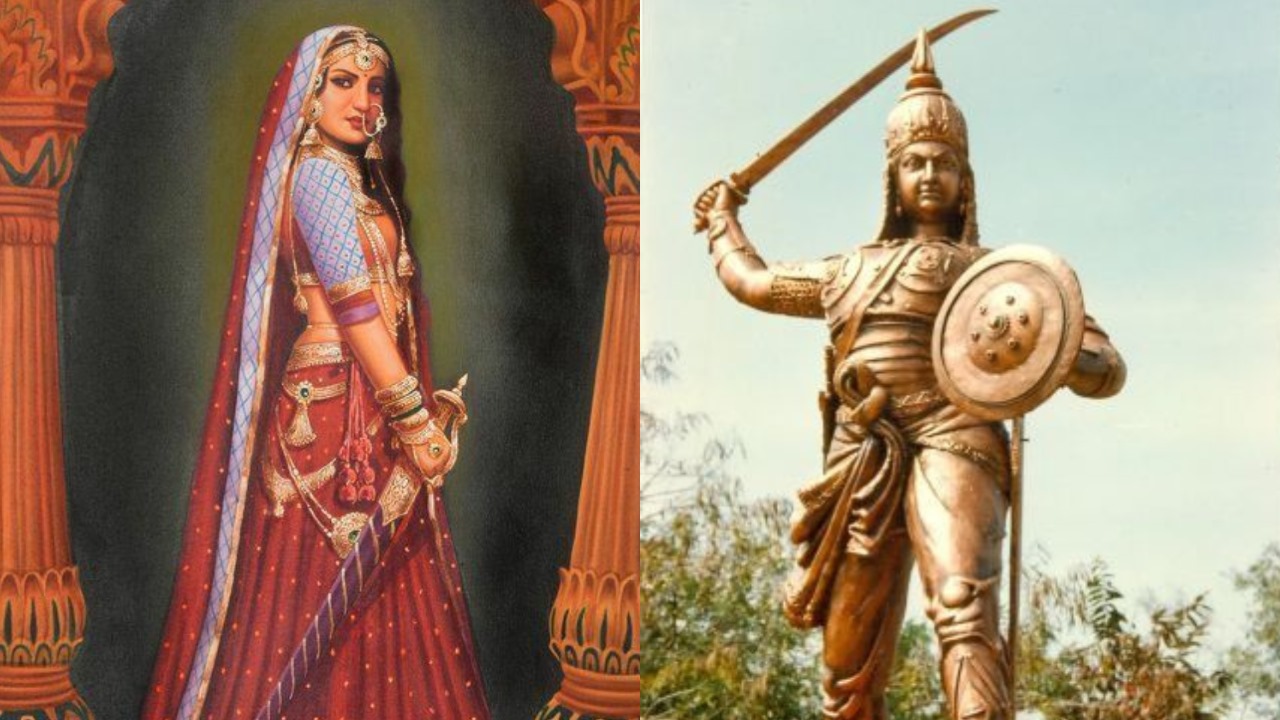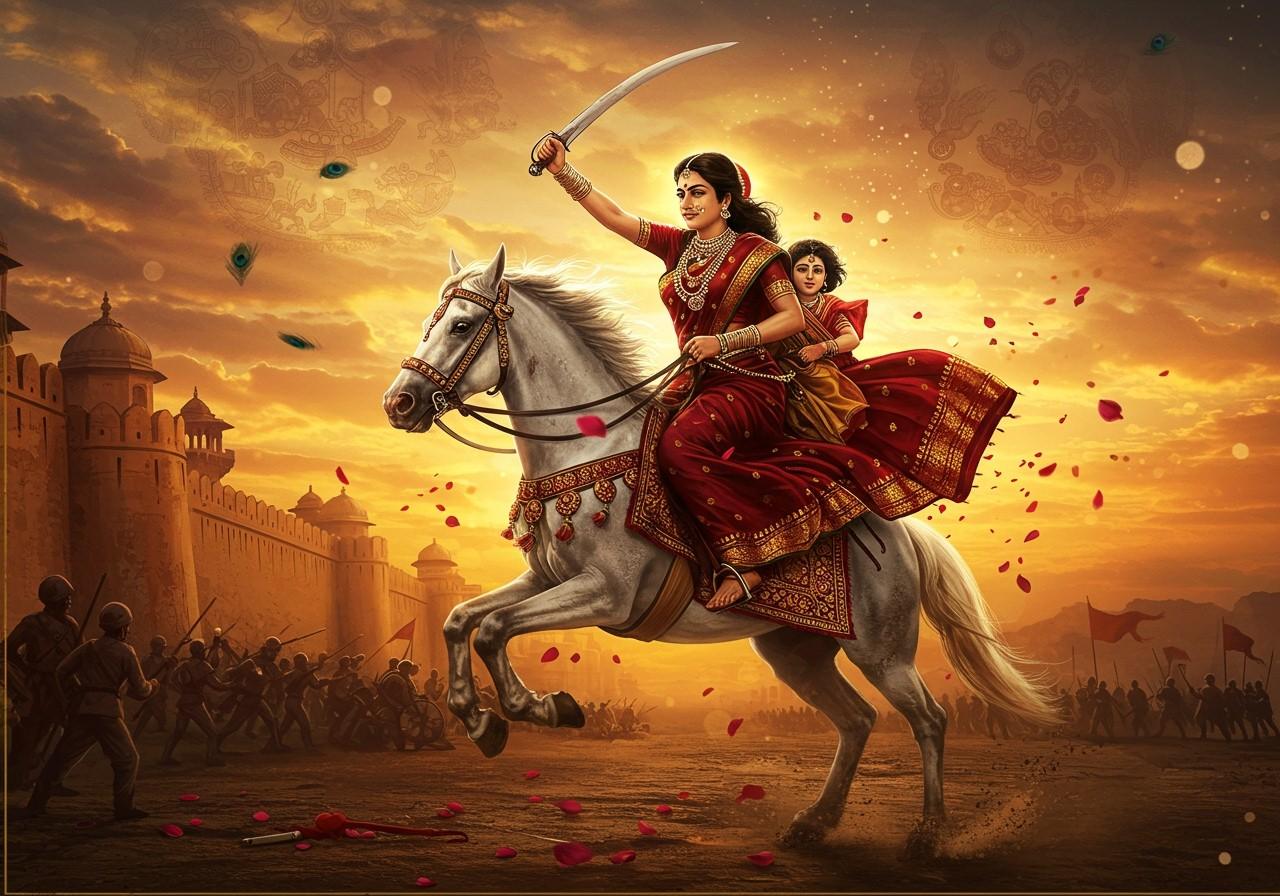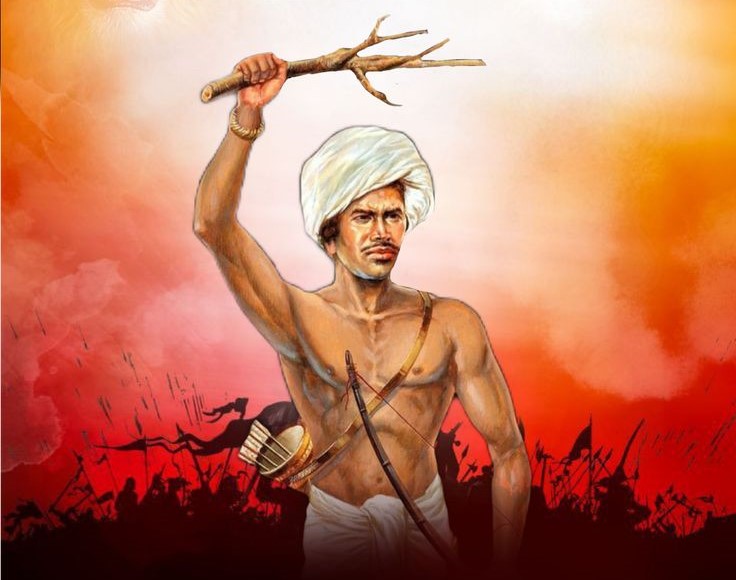By Dr. Bhupendra Kumar
On the day of Durga Ashtami, a daughter was born on Indian soil, embodying both compassion and courage. Even after 500 years, we honor and respect the brave Rani Durgavati not just because she was the head of a royal family, but due to her welfare work and valour. The Gondwana queen faced five invasions from Mughal Emperor Akbar and Sultan Baz Bahadur of Malwa, bravely confronting each and emerging victorious. Ultimately, she fell victim to the cunning strategies of Mughal general Asaf Khan near Narai Nala in Jabalpur. Faced with pressure to accept subjugation, she chose sacrifice over compromise.
Rani Durgavati was the daughter of Chandela King Kirti Vardhan of Kalinjar, situated in Uttar Pradesh’s Banda district. This region and fort have been historically significant through various eras, including the Maurya and Gupta periods. Kalinjar attracted numerous invaders such as Mahmud of Ghazni, Alauddin Khilji, Babur, and Sher Shah Suri, but the fort remained invincible.
Born on October 5, 1524, in Kalinjar Fort, Rani Durgavati was a single child of her mother and was raised with great care. She was intelligent, energetic, and courageous from a young age. Due to the frequent attacks on Kalinjar, all royal women were trained in self-defence, and Durga learned weaponry from childhood. She enjoyed hunting in the forest with her friends, and she excelled in archery from an elephant’s back. She was so brave that she could hunt a tiger with a sword.
In 1544, she married Dalpat Shah, the eldest son of the ruler of Garh Mandla, Raja Sangram Shah. This marriage united the Chandela Kshatriyas of Kalinjar with the Gonds of Garh Mandla, indicating the lack of distinction between urban and tribal dwellers in India at that time.
After giving birth to a son, Vir Narayan, a year later, her husband died in 1550. At the young age of five, her son was enthroned, and Rani Durgavati began to rule. She formed a nine-member council to manage the state’s finances, military, and internal security. She promoted agriculture and trade in forest produce, moved her capital to the strategic fort of Chauragarh, and oversaw the construction of several water tanks.
The prosperity of Gondwana attracted invasions. Despite defeating Sultan Baz Bahadur of Malwa three times, Mughal forces led by Asaf Khan launched a major attack. After resisting multiple invasions, Rani faced a significantly reinforced Mughal army. She adopted guerrilla tactics but was eventually lured into a trap near a stream where she was injured by arrows. Rather than surrender, she chose to die with honor and took her own life with a dagger on June 24, 1564. Her sacrifice is commemorated, though the subsequent Mughal invasion brought devastation and suffering to her people, as recorded in history.






